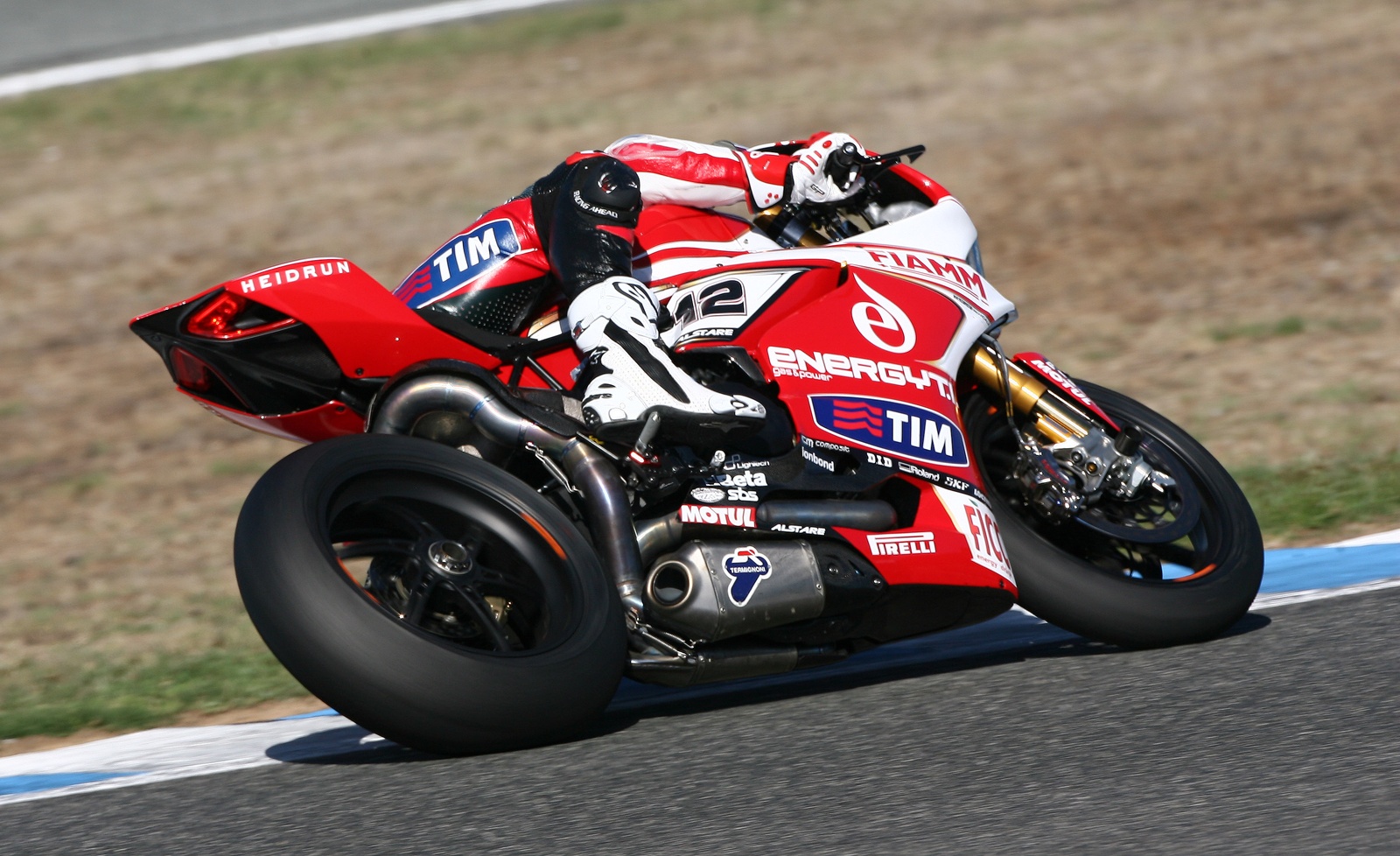Trends in World Superbike exhaust design
When I first started watching World Superbike almost 25 years ago, the bikes racing on track were sometimes little more than showroom-spec machines with race tyres, a kit exhaust and the lights removed. The race exhaust systems were very similar to the road systems, although a little less restrictive and much lighter.
Rob McElnea scored a third place for the Padgett’s race team in the 1990 Hungarian World Superbike round on a Yamaha OW-01. I was very taken with the OW-01, so when I was a bit older (and a bit richer) I bought one. One of the first jobs was to replace the original silencer with a Yamaha race-kit item. There were several kilos’ difference in mass in the silencer alone; the silencer can was made of aluminium rather than steel, and was physically smaller, and the pipe that forms part of the silencer was made from a thin carbon steel rather than the more substantially proportioned road item. Eventually the standard stainless steel front pipes, although nicely made, were replaced by thinner gauge race-kit items made from carbon steel. In 1990, when this bike was current, race-kit items were aluminium and steel.
Fast-forward less than five years and we started to see the introduction of titanium to a limited extent for exhaust systems, and carbon fibre reinforced polymer (CFRP) exhaust cans. The early ‘carbon cans’ had a tendency to shake themselves to pieces and so were either expensive, light and lacked durability or were expensive, heavy and durable. While development soon made them more durable, carbon cans never became universal, although many exhaust companies supplying non-factory teams liked to use them – they sold lots of exhausts to people who ran sports bikes on the road.
Another 20 years on and we see that most World Superbikes have a full titanium system. Some superbike teams have experimented with superalloys such as Inconel but it has not been taken up widely. The higher engine speeds used and the tendency to have the engine tuned for higher speeds in order to improve power have in general seen the exhaust systems become shorter. In the early 1990s, the end of the silencer on the inline four-cylinder bikes was very close to the rear of the motorcycle, and now many of the equivalent machines have a short and stubby silencer, the rearmost part of which is not far behind the rider’s boot.
There is a packaging and weight distribution advantage to having the exhaust cans low on the machine and closer to the centre of gravity. Even Ducati, which pioneered underseat exhaust cans for its road motorcycles, has relented and packaged its silencers at the bottom of the fairing, even though it appears to have made pipe routing quite tortuous. Yamaha meanwhile, which has made only a token effort in support of its World Superbike entrants in 2013 after being very strong only a few years ago, still retains its underseat silencers. Superbike racing is less important to Yamaha than it once was, and this might explain why its road bikes no longer reflect the latest trends in superbike racing
 Fig. 1 - The Ducati Panigale race bike had underslung silencers and tortuous pipe routing (Courtesy of Team Alstare)
Fig. 1 - The Ducati Panigale race bike had underslung silencers and tortuous pipe routing (Courtesy of Team Alstare)
Written by Wayne Ward